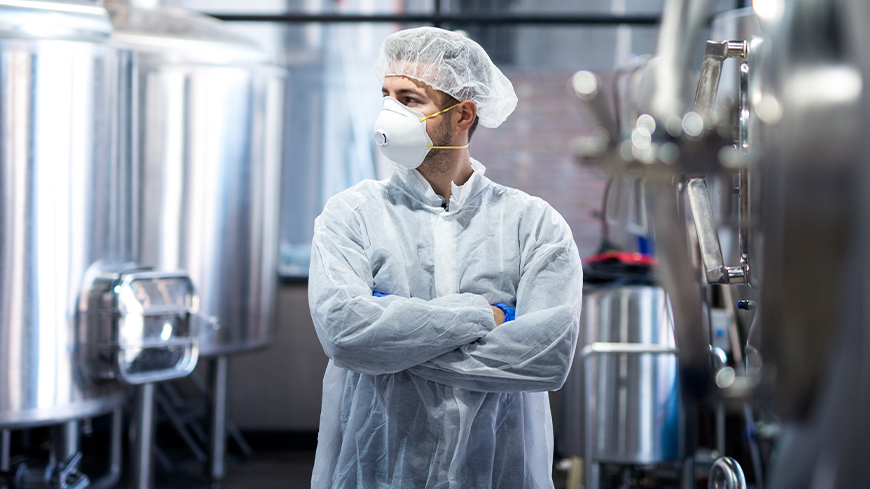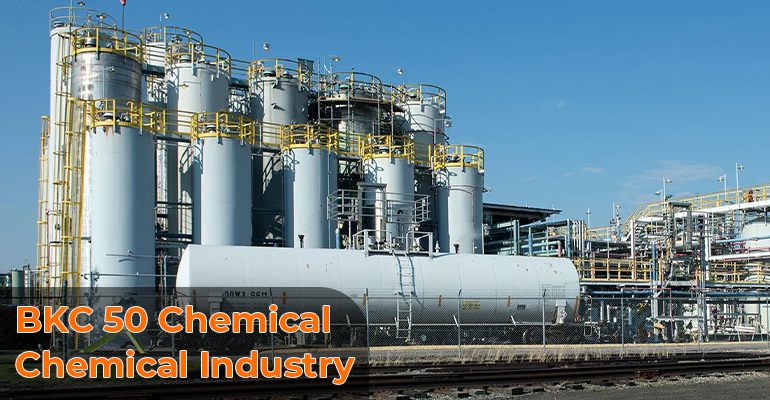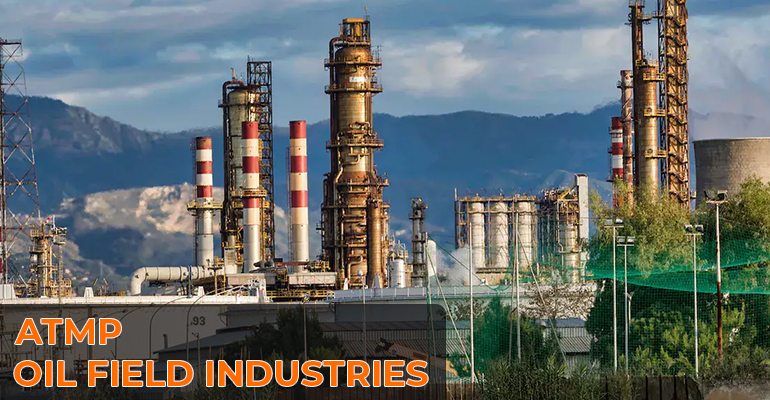ATMP is a versatile water treatment chemical widely used across industries for scale control,…
PBTC Chemical: A Benchmark Solution for Metal Protection

PBTC Chemical also is central to the stabilization of hypochlorite solutions. Hypochlorite, commonly used as a disinfectant, is prone to decomposition, especially when exposed to high temperatures or light. Phosphonobutane Tricarboxylic Acid – PBTC serves as an excellent stabilizer, prolonging the shelf life and effectiveness of hypochlorite-based products. This makes it valuable in industries that rely on chlorine bleach and other hypochlorite-based formulations for disinfection and cleaning.
Overall, PBTC Chemical is a highly Multifaceted chemical that offers exceptional performance in a wide range of industrial processes. Its scale and corrosion inhibition properties, along with its stabilizing effects, make it indispensable in various sectors, contributing to improved efficiency and cost-effectiveness.
Manufacturing Process of PBTC Chemical by Maxwell Additives
At Maxwell Additives Pvt. Ltd., the manufacturing of 2-Phosphonobutane 1,2,4-tricarboxylic acid (PBTC) is a precision-controlled, quality-driven process. As one of the trusted PBTC chemical manufacturers and suppliers, we ensure that every step of production adheres to international standards to deliver a highly pure, effective, and reliable water treatment additive.
Step-by-Step PBTC Manufacturing Process
1. Raw Material Procurement
The PBTC production begins with sourcing high-purity raw materials including maleic anhydride, phosphorous acid, and other key intermediates. We partner with certified vendors to ensure the consistency and quality of our base chemicals.
2. Precision Reaction Process
Using Maxwell’s advanced reactors and controlled environments, the core reaction involves the condensation of maleic anhydride with phosphorous acid. The process is carried out under regulated temperature and pressure to produce the desired phosphonated carboxylic acid structure.
- Temperature Control: Ensures optimal reaction yield.
- Catalyst Usage: Carefully chosen catalysts accelerate the reaction without degrading product quality.
3. Hydrolysis and Neutralization
Once the reaction is complete, the intermediate product undergoes hydrolysis. The resulting product is then neutralized using specific bases to stabilize the chemical and enhance its shelf life.
4. Filtration and Purification
The crude PBTC solution is filtered to remove any by-products, unreacted materials, or impurities. Maxwell Additives uses multi-stage filtration and purification systems to achieve high chemical purity and clarity.
5. Quality Testing and Analysis
Before packaging, the PBTC chemical undergoes strict quality control tests in our in-house lab, which is equipped with modern instruments like:
- HPLC (High-Performance Liquid Chromatography)
- Titration analysis
- Thermal stability testing
- Metal ion chelation tests
These ensure compliance with industry benchmarks and client specifications.
- Packaging and Storage
After final approval, PBTC is packed in HDPE drums or IBC tanks depending on client requirements. The containers are securely sealed and labeled, and the product is stored in a dry, temperature-controlled facility to maintain integrity until delivery.
Application of PBTC
1. Cooling Water Treatment Systems
2-Phosphonobutane-1,2,4-Tricarboxylic Acid – PBTC is widely used in industrial and commercial cooling water treatment systems. Its excellent scale inhibition and corrosion resistance properties make it a preferred choice for maintaining the integrity of pipelines, heat exchangers, and evaporative condensers. Unlike conventional inhibitors, PBTC Chemical performs well under high temperatures and varying pH levels. It effectively prevents calcium phosphate, calcium carbonate, and zinc salts from forming scale deposits. As a result, PBTC – 2-Phosphonobutane-1,2,4-Tricarboxylic Acid enhances equipment efficiency and reduces maintenance frequency, leading to improved operational reliability and reduced energy consumption.
2. Reverse Osmosis (RO) and Membrane Systems
PBTC Chemical plays a critical role in preventing membrane scaling and fouling in RO and ultrafiltration systems. Due to its strong chelation and dispersing capabilities, 2-Phosphonobutane-1,2,4-Tricarboxylic Acid – PBTC is effective in controlling the deposition of calcium and magnesium salts on the membrane surface. It is particularly useful in systems where water quality fluctuates and traditional antiscalants fail. PBTC – 2-Phosphonobutane-1,2,4-Tricarboxylic Acid helps extend membrane lifespan and maintain filtration efficiency, ensuring long-term performance. Additionally, it is compatible with a wide range of RO chemicals and does not interfere with system materials.
3. Oilfield Water Injection Systems
In oil and gas industries, water injection is a common technique used to maintain reservoir pressure. However, scale formation in pipelines and downhole equipment can lead to serious operational issues. 2-Phosphonobutane 1,2,4-tricarboxylic acid (PBTC) is highly valued in oilfield water treatment for its stability at high temperature and salinity. It effectively inhibits scale in complex brine conditions and prevents corrosion in steel pipelines. PBTC Chemical helps operators maintain uninterrupted injection flow and reduce the need for frequent mechanical cleaning or chemical overuse. Its efficiency and reliability make it a preferred antiscalant in harsh oilfield environments.
4. Industrial Boiler Water Treatment
Industrial boilers are prone to scaling, which reduces heat transfer and increases fuel costs. PBTC – 2-Phosphonobutane-1,2,4-Tricarboxylic Acid serves as a powerful additive in boiler water treatment formulations. Its excellent thermal stability and ability to control carbonate and phosphate scales make it ideal for high-pressure boilers. 2-Phosphonobutane-1,2,4-Tricarboxylic Acid – PBTC not only prevents scale but also protects boiler components from internal corrosion. By incorporating PBTC Chemical into boiler treatment programs, industries can maintain steam purity, minimize downtime, and prolong equipment life, ensuring efficient and uninterrupted operation across a variety of industrial sectors.
5. Detergents and Cleaning Formulations
2-Phosphonobutane 1,2,4-tricarboxylic acid (PBTC) is commonly used in the formulation of high-performance detergents and industrial cleaners. It acts as a scale-preventing and anti-redeposition agent, helping to keep surfaces and fabrics residue-free even in hard water conditions. PBTC – 2-Phosphonobutane-1,2,4-Tricarboxylic Acid binds with metal ions like calcium and magnesium, preventing them from interfering with detergent action. This enhances the cleaning power and efficiency of the formulation. Moreover, PBTC Chemical is stable in alkaline environments and compatible with other surfactants and builders, making it an essential ingredient in modern eco-friendly cleaning solutions.
Why PBTC Chemical is Widely Used in Metal Surface Treatment
PBTC Chemical (2-Phosphonobutane-1,2,4-Tricarboxylic Acid) is widely used in metal surface treatment processes due to its exceptional anti-corrosion and chelating properties. When applied to metal surfaces, it forms a protective layer that prevents oxidation and corrosion, especially in harsh environments. This makes it an ideal additive in pre-treatment formulations for steel, aluminum, and other metal alloys.
One of the key advantages of PBTC – 2-Phosphonobutane-1,2,4-Tricarboxylic Acid is its ability to effectively bind with metal ions like calcium, iron, and zinc, thus preventing scale deposits and surface staining. Additionally, 2-Phosphonobutane-1,2,4-Tricarboxylic Acid – PBTC remains stable under high temperatures and varying pH levels, offering long-lasting protection in acidic and alkaline cleaning baths.
Industries prefer 2-Phosphonobutane 1,2,4-tricarboxylic acid (PBTC) for its compatibility with various surface treatment systems and its role in enhancing the adhesion of subsequent coatings like paints and sealants. Overall, its chemical stability, safety profile, and performance efficiency make PBTC a trusted solution in modern metal finishing and surface treatment processes.
Benefits of PBTC – 2-Phosphonobutane-1,2,4-Tricarboxylic Acid
1. Superior Scale Inhibition
2-Phosphonobutane-1,2,4-Tricarboxylic Acid – PBTC is highly effective in preventing scale formation caused by calcium, magnesium, and other mineral salts. This makes it an ideal antiscalant in water treatment systems. PBTC Chemical works efficiently even at low concentrations and in extreme water conditions. Its unique molecular structure allows it to bind with metal ions, stopping them from crystallizing and forming scale on surfaces. This superior performance helps extend equipment life and maintain system efficiency. Industries relying on clean heat exchangers, RO membranes, and pipelines benefit significantly from the dependable scale control provided by PBTC – 2-Phosphonobutane-1,2,4-Tricarboxylic Acid.
2. Excellent Corrosion Protection
One of the most valued properties of PBTC Chemical is its strong anti-corrosion behavior, especially in acidic and alkaline systems. PBTC – 2-Phosphonobutane-1,2,4-Tricarboxylic Acid forms a protective layer on metal surfaces, preventing corrosion caused by dissolved oxygen and harsh chemicals. This makes it a preferred additive in cooling towers, boilers, and metal surface treatment baths. Compared to traditional phosphonates, 2-Phosphonobutane 1,2,4-tricarboxylic acid (PBTC) delivers longer-lasting corrosion inhibition with less environmental impact. Its compatibility with multi-metal systems and its resistance to degradation enhance the safety and longevity of industrial infrastructure.
3. Thermal and Hydrolytic Stability
2-Phosphonobutane-1,2,4-Tricarboxylic Acid – PBTC is known for its remarkable stability under high temperatures and varying pH conditions. This makes PBTC Chemical especially useful in systems where temperature and pressure fluctuate, such as boilers, heat exchangers, and oilfield applications. Unlike other antiscalants that degrade or lose efficiency at high temperatures, PBTC – 2-Phosphonobutane-1,2,4-Tricarboxylic Acid maintains its structural integrity and performance. This ensures consistent protection against scaling and corrosion over longer operational cycles, reducing the need for frequent maintenance or chemical replenishment, and thereby improving the cost-efficiency of the overall system.
4. Effective in Hard Water Conditions
PBTC Chemical performs exceptionally well in hard water conditions where high concentrations of calcium and magnesium are present. 2-Phosphonobutane 1,2,4-tricarboxylic acid (PBTC) effectively chelates these ions and prevents them from interfering with chemical processes or forming deposits. This makes it a valuable additive in detergents, water treatment, and cooling systems operating with hard water sources. PBTC – 2-Phosphonobutane-1,2,4-Tricarboxylic Acid ensures stable pH levels and prevents the formation of insoluble salts, keeping systems clean and functioning efficiently. Its adaptability and performance under tough water conditions make it a trusted solution in both industrial and domestic applications.
5. Environmentally Safer Choice
As industries move toward more sustainable practices, PBTC – 2-Phosphonobutane-1,2,4-Tricarboxylic Acid stands out for its low toxicity and biodegradability. Unlike traditional phosphates, 2-Phosphonobutane-1,2,4-Tricarboxylic Acid – PBTC has minimal environmental impact when used and disposed of correctly. It complies with many global water safety and environmental standards, making it a responsible choice for modern applications. PBTC Chemical supports eco-friendly formulations in detergents and water treatments without compromising on performance. Its ability to deliver high efficiency with a smaller environmental footprint makes it a preferred option for companies committed to sustainable water management.
Conclusion:
PBTC – 2-Phosphonobutane-1,2,4-Tricarboxylic Acid has rightfully earned its place as a high-performance, multifunctional chemical across diverse industrial sectors. From advanced water treatment systems to critical metal surface processes and detergent formulations, PBTC Chemical offers unmatched scale inhibition, corrosion protection, thermal stability, and compatibility with varying pH and water conditions. Its ability to stabilize hypochlorite and work effectively under extreme operational environments adds to its utility and demand.
At Maxwell Additives Pvt. Ltd., we are proud to High Performing 2-Phosphonobutane 1,2,4-tricarboxylic acid PBTC Manufacturer using precision-engineered processes to ensure top-tier quality and performance. For industries seeking reliability, efficiency, and environmentally safer solutions, PBTC stands as a powerful, future-ready choice.
FAQs
1. How is PBTC useful in reverse osmosis (RO) and membrane filtration systems?
PBTC acts as a strong antiscalant in RO and ultrafiltration systems, preventing calcium and magnesium salt deposition. Its chelating and dispersing properties extend membrane life and ensure consistent filtration even when water quality fluctuates.
2. What makes PBTC ideal for metal surface treatment processes?
PBTC forms a protective layer on metal surfaces, guarding against oxidation and corrosion. It also improves the adhesion of coatings and remains stable across a wide pH range, making it an excellent choice for pre-treatment baths in metal finishing.
3. How is PBTC used in industrial boiler water treatment?
PBTC is used in boiler water treatment to prevent scale buildup and internal corrosion. Its high thermal stability allows it to perform in high-pressure boilers, enhancing steam purity and reducing downtime caused by scaling or corrosion.
4. Can PBTC be used in systems that operate under hard water conditions?
Absolutely. PBTC is highly effective in hard water environments as it chelates calcium and magnesium ions, preventing them from forming scale. This makes it useful in household detergents, industrial water systems, and cleaning applications.
5. Why is PBTC considered an environmentally safer alternative?
PBTC has low toxicity and is biodegradable, making it compliant with global water safety standards. It delivers high performance in scale and corrosion control without causing environmental harm, supporting sustainable water treatment practices.



